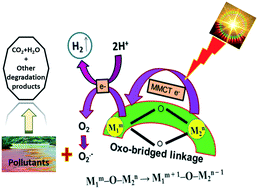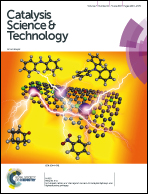A review of solar and visible light active oxo-bridged materials for energy and environment
Abstract
In efficient solar energy conversion for environmental and energy applications, the use of visible-light-active photocatalysis as a green and sustainable technology has become a promising technology. A visible-light-active photocatalyst (λ > 400 nm) for efficiently harvesting solar energy and addressing a recent primary concern has been designed and fabricated. An effective separation of photo-generated electron hole pairs and their rapid transport to the semiconductor surface is required for high-efficiency solar photocatalysis; therefore, significant efforts have been devoted to designing and developing hetero-binuclear oxo-bridged systems, owing to their unique physical and electronic properties, which make them promising candidates for photocatalysis. These materials exhibit excellent light-harvesting properties, due to metal-to-metal charge-transfer (MMCT) excitation, and possess band-gap energies that are more suitable for solar light absorption. Recently, hetero-binuclear oxo-bridged systems have facilitated the rapid progress in enhancing photocatalytic efficiency under visible light irradiation; therefore, this mini-review aims to provide a systematic study of heteronuclear oxo-bridged systems for environmental decontamination and artificial photosynthesis (water splitting and photocatalytic CO2 reduction). This review provides a few perspectives on the challenges hindering the further advancement of oxo-bridged materials for application in photocatalysis.



 Please wait while we load your content...
Please wait while we load your content...